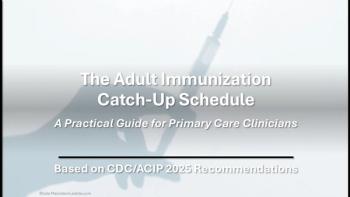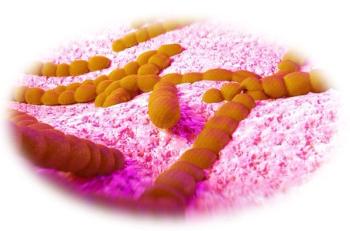
Umbilical Cord Blood Adds Graft Options in Childhood Leukemia
MINNEAPOLIS -- For children with leukemia who need a transplant, five-year disease-free survival rates from allogeneic cord blood appear to equal those from allele-matched marrow or peripheral blood stem cells.
MINNEAPOLIS, June 8 -- For children with leukemia who need a transplant, five-year disease-free survival rates from allogeneic cord blood appear to equal those from allele-matched bone marrow or peripheral blood stem cells.
Although cord blood has become an accepted alternative to bone marrow or peripheral blood stem cells for allogeneic transplantation, the latter are generally regarded as the preferred graft sources, and represent the standard of care, John E. Wagner, M.D., of the University of Minnesota here, and colleagues, reported in the June 9 issue of the Lancet.
To assess leukemia-free survival after transplantations of these graft alternatives, the researchers studied 503 children, younger than age 16, with acute leukemia who underwent transplantation with umbilical cord blood and compared their outcomes with those of 282 children given bone-marrow transplants.
All told, the five-year probabilities of leukemia-free survival were 38% after HLA-matched bone-marrow transplants and 37% after mismatched bone-marrow transplants (and 60% after rare HLA-matched cord-blood transplants).
After one mismatched cord-blood transplant with low cell dose survival was 36%, after one-mismatched cord-blood transplant with high cell dose, 45%, and after two-mismatched cord-blood transplants, it was 33%, the investigators wrote.
These data "support the practice of simultaneously searching accredited cord-blood banks and bone-marrow donor registries for all children with acute leukemia who are eligible for transplantation of hemopoietic stem cells from unrelated donors," the investigators wrote.
All transplantations, most for acute lymphocytic leukemia but about 20% for acute myelocytic leukemia, took place in the U.S., and data came from the statistical center at the Medical College of Wisconsin and the New York Blood Center.
Recipients of umbilical cord blood were transplanted with grafts that were HLA-matched (n=35) or HLA-mismatched for one antigen (n=201) or two antigens (n=267) (typing at antigen level for HLA-A and HLA-B, and allele level for HLA-DRB1).
Bone-marrow recipients were transplanted with grafts that were matched at the allele level for HLA-A, HLA-B, HLA-C, and HLA-DRB (n=116), or mismatched (n=166).
Although the survival rates for these HLA-matched cord blood grafts appeared significant, the number of children studied was small, and further study is required to confirm this finding, the researchers said.
Overall, two HLA mismatches plus low cell dose hurt survival.
For example, compared with the matched bone marrow transplants, for children given umbilical cord blood HLA-mismatched for two antigens, mortality rates were more than twice as high, regardless of the cell dose in the blood (relative risk 2.31, P=0.0003).
Transplant-related mortality rates for cord blood were higher possibly after one-antigen HLA-mismatched with low cell dose (RR 1.88, P=0.0455). For cord blood HLA-mismatched for one antigen, mortality was lower if higher cell doses were transplanted.
Relapse rates were lower after two-antigen HLA-mismatched umbilical-cord-blood transplants (0.54, P=0.0045) than after allele-matched bone marrow transplants. This lower relapse rate is consistent with a more potent graft-versus-leukemia effect, found in other bone-marrow transplant studies, the researchers said.
The study had limitations common to all observational studies in that the choice of intervention is established by the treating physician. Graft source might be governed by complex criteria for selection of patients. Although all major known risk factors (age, race, disease status, leukemia type) were adjusted for, only a randomized trial could exclude a potentially confounding effect of selection bias.
"Our findings support the need for greater investment in cord blood and large-scale banking to increase HLA diversity," the researchers said.
However, Dr. Wagner and his colleagues said, "in the absence of a randomized trial, we cannot definitively state the relative efficacy of bone-marrow and cord-blood grafts, but the data support the use of cord-blood grafts in children with acute leukemia.
In an accompanying comment, Vanderson Rocha, M.D., and Eliane Gluckman, M.D., of Hpital Saint Louis in Paris, said umbilical cord blood has made allogeneic hemopoietic stem-cell transplantation available to patients who do not have an HLA-identical sibling or an unrelated donor.
Compared with allogeneic bone marrow or mobilized stem cells from peripheral blood of unrelated donors, umbilical cord blood has substantial logistic and clinical advantages, such as much faster availability of banked cryopreserved umbilical cord blood units (within two weeks after starting search), and extension of the donor pool because of the tolerance of one or two in six HLA mismatches, the editorialists said.
Cell dose should be increased with the number of HLA mismatches, they said. In the near future, cell dose should not be regarded as a limiting factor for cord blood grafts because of encouraging results of double cord-blood transplantations and other improvements.
However, they added better HLA matching will only be possible by increasing the cord-blood inventory and the quality of cord-blood banked units.
The comment writers had no financial disclosures to report.
Newsletter
Enhance your clinical practice with the Patient Care newsletter, offering the latest evidence-based guidelines, diagnostic insights, and treatment strategies for primary care physicians.

































































































































































































































































































